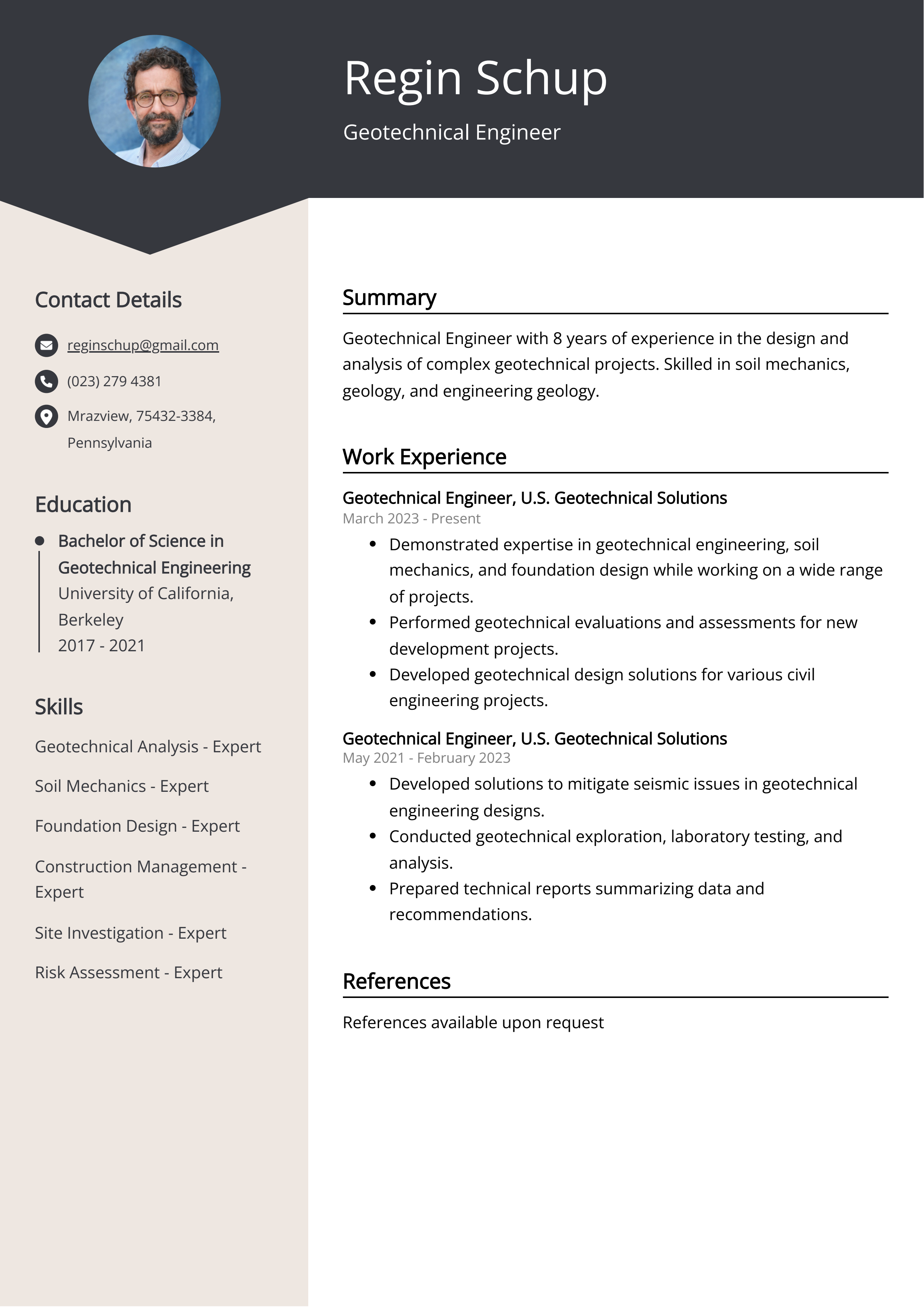The Geotheta Statements
The Geotheta Statements
Blog Article
The smart Trick of Geotheta That Nobody is Talking About
Table of ContentsTop Guidelines Of GeothetaGeotheta Things To Know Before You Get ThisGeotheta Fundamentals ExplainedSome Known Factual Statements About Geotheta
They work together with civil designers, structural designers, designers, and other specialists to integrate geotechnical considerations into the overall task design and construction procedure. This requires efficient team effort, control, and communication to make sure that the geotechnical elements straighten with the job objectives and satisfy governing demands.Mining & Materials Design: Principles of exploration, infiltration rates, and factors impacting the selection of boring technique. Blowing up methods in surface and below ground functions. Mechanical and continuous approaches to fragmentation, including longwall shearing and fullface boring.
Modelling of fragment and particle size circulations; comminution as a transfer function. Comminution technology: crushing, grinding, size classification. Integrated analysis of fragmentation and comminution procedures. Used by: Mining & Materials Engineering.
The Basic Principles Of Geotheta
Bachelor's level programs in civil, geotechnical, geological, and ecological engineering usually last 4 years and include general education and learning programs in English, social scientific research, and the humanities, along with courses in sophisticated mathematics, structural geology, and fluid mineralogy. (https://hub.docker.com/u/geotheta)
Geotechnical design involves the evaluation of the soil and rock conditions at a certain website, and their ramifications for the advancement of that site. As many structures count on the ground for assistance, it is without surprise that an in-depth understanding of the ground problems, and the viability of structure systems, are crucial to the long-term security and performance of the structure or framework.
Specialising in the examination of geological formations and ground behaviour, geotechnical designers perform clinical investigations and testing to comprehend the influence these geological developments might carry the layout and building of building, civil and infrastructure jobs. This know-how is critical for the layout and construction of buildings, roads, passages, dams, bridges, and supply of water and sewer system.
The geotechnical team at Douglas Partners consistently speak with engineers, design designers, developers, and builders to make referrals on layout and development proposals to guarantee that the built structures are accordingly made for the ground problems. The style of footing systems requires to think about the weight of the framework, the capability of the ground to sustain that weight together with movement tolerances and effective construction.
Geotheta - Questions
This job is greatly simplified by the usage of our Douglas Map geospatial platform which makes this details readily obtainable in a very easy to use internet internet browser interface. A geotechnical designer will certainly direct the boring of boreholes and test pits to gather soil and other examples, and also evaluate surface attributes and ground direct exposures to create a geotechnical design of the subsurface problems.
Relying on the job type and ground problems experienced, lab testing might among various other points examine stamina, compressibility, reactivity and/or permeability of soil and rock samples. After this information is collected and looked at, the results are used for a geotechnical model of the website, which is generally presented as areas across the site.

A geotechnical examination by nature can only assess the ground problems at the areas pierced or dug deep into. Natural variations in soil and rock conditions can happen across a website and between examination areas. It is consequently good practice that the geotechnical designer be retained throughout construction of the task to give on-site verification that the ground problems experienced are constant with the expectations and suggestions provided in the geotechnical examination report.
Some Known Incorrect Statements About Geotheta
Geotechnical designers utilize their comprehensive understanding of dirt and rock to assess danger and resolve issues on varied infrastructure projectsGeotechnical design is a specialist branch of civil design which checks out the behaviour of planet products and the application of dirt and rock mechanics. Consulting Engineer. As a geotechnical designer, you will analyze the physical, mechanical and chemical residential properties of soil and rock in order to create foundations, preserving frameworks and earthworks
Geotechnical engineering is carefully connected to and overlaps with, both engineering geology and click here to read ground design - https://geotheta.jimdosite.com/. It's possible to specialise in geotechnics or help a geotechnical business but be known as a design geologist or a ground engineer. As a geotechnical engineer, you'll require to: develop and preserve connections with customers and other specialists associated with the site, throughout each projectmaintain security standards on website bear in mind expense ramifications when you make recommendationsstudy geological maps and airborne photographs from a series of sources and from different time periodsexamine building and construction prepares to see how practical they are based on your understanding of the siteinvestigate dangers or geological hazards for the sitesearch for ecologically delicate attributes, such as landfill start to create accurate and expository ground modelsplan area investigationsdrill and evaluate examples of bedrock, soil, groundwater and additional materials monitor various other experts on sitesolve technical problems as they arise, such as unexpected structures at drill sitesmonitor conditions throughout and after building to see to it structures are stable in the short and lengthy termadding data accumulated on site to your first researchcreating geotechnical computations, illustrations, and two or three-dimensional computer designs analyzing the datamaking recommendations about the proposed use the site

Report this page